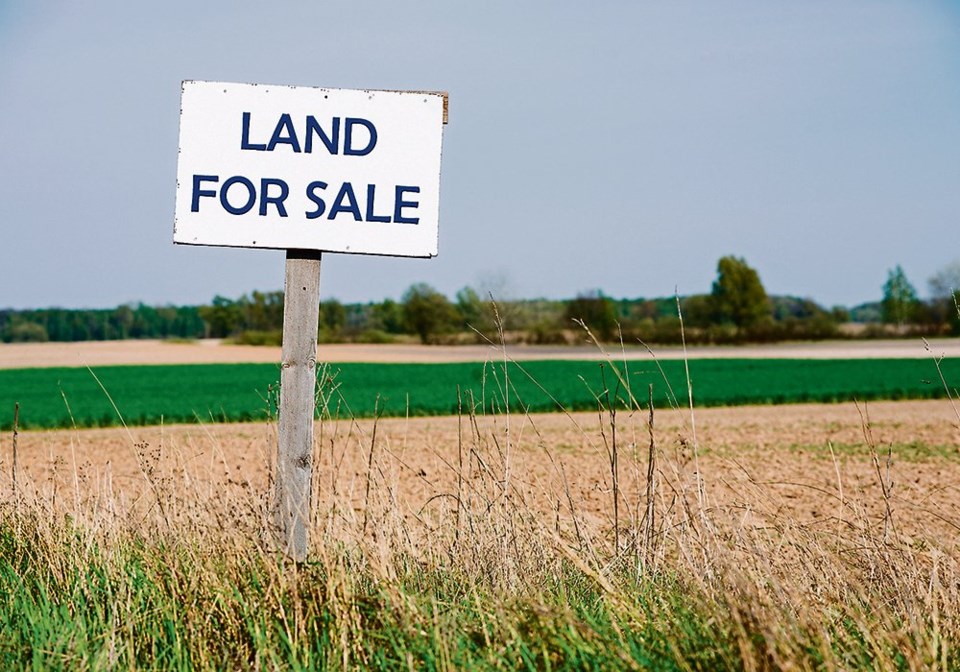WESTERN PRODUCER — The market for Canadian farmland showed no signs of softening in 2021 despite weather-related challenges that affected farm productivity across much of the country, said Canada’s largest farm lender.
According to Farm Credit Canada’s 2021 Farmland Values Report, farmland values across the country rose by a weighted average of 8.3 percent last year, outpacing a 5.4 percent increase in 2020 and a 5.2 percent increase in 2019.
On the Prairies, 2021 farmland values rose by an average of 9.9 percent in Manitoba, 7.4 percent in Saskatchewan and 3.6 percent in Alberta, FCC’s report said.
The largest year-over-year increases were recorded in Ontario (up 22.2 percent) and British Columbia (up 18.1 percent).
“The low interest rate environment and favourable commodity prices seem to have offset some of the many challenges that could have been expected to restrain the demand for farmland and the price producers are willing to pay for land,” said J.P. Gervais, FCC’s chief economist.
“It’s a testament to the resilience and business confidence of farm operators who are largely driving this strong Canadian farmland market.”
FCC calculates average farmland values each year based on sales information contained in a national farmland transactions database.
National, provincial and regional value calculations are based on information from actual farmland sales, which are compared to benchmark farm properties.
The FCC report looks at values for cultivated farmland only, including irrigated land in some areas.
On the Prairies, weather-related issues in 2021 — including widespread drought and below-average yields — appeared to have had little or no impact on sales values, said Gervais.
Low interest rates and a significant increase in commodity prices helped to offset productivity declines and maintain demand among potential farmland buyers.
“What we’ve seen is that it (the drought) has had limited to no distinguishable impact on the data,” Gervais said.
“It’s early for sure… so this is not the end of the story when it comes to the drought of 2021. It’s too early to say it’s not going to have an impact… but so far, we have not seen any indication to signal that the dry conditions have… (negatively impacted) farmland values.”
In Saskatchewan, where drought had a significant effect on 2021 productivity, the supply of available farmland “could not keep pace with an increase in demand, leading to higher market values,” the report said.
“With the tight supply and listings selling quickly, there were few active properties on the market.”
On a year-over-year basis, the number of farmland transactions contained in the FCC database was up four percent in Saskatchewan and 15 percent in Alberta.
Year-over-year sales volumes in Manitoba showed little change. Officials noted that the FCC’s sales database does not include all the transactions that may have taken place across the Prairies.
Regionally, the value of farmland varied widely across the West, based on productive capacity and several other factors, FCC said.
Across Saskatchewan, sales values for non-irrigated dirt ranged from a low of $1,000 an acre in some areas of northwestern, southwestern and east-central Saskatchewan to a high of $4,700 an acre in the province’s west-central region.
In Alberta, dryland sales values ranged from a low of $1,200 per acre in some parts of the Peace River region, to a high of $10,000 per acre in the province’s central region.
Manitoba sales values ranged from a low of $1,000 per acre in the Interlake region, to high of $10,400 an acre in the Central Plains-Pembina Valley.
Value ranges shown in the report represented 90 percent of the farmland sales in each area. The top and bottom five percent of sales representing the highest priced and lowest priced transactions in 2021 were excluded.
In a March 11 interview with news reporters, Gervais said optimism in the farming community has supported farmland prices.
“I’m not surprised that farmland values continue to increase but I’m a bit surprised by the magnitude of the increase, quite frankly,” he said.
In addition to high commodity prices, a limited supply of farmland available for purchase supported sales values, he added.
Volatility in global grain markets continues to impact land buying decisions.
Gervais encouraged growers who are considering farmland purchases to assess their risks carefully and have solid risk management plans in place.
Current high commodity prices will not last forever and borrowing rates are expected to increase.
FCC is forecasting another four rate hikes by the Bank of Canada in 2022.
Producers should maintain a risk management plan that accounts for all possible economic changes.
Growers should ensure that their budgets have room to flex if commodity prices, yields or interest rates shift. They also need to exercise caution, especially in regions where the growth rate of farmland values exceeds the rate of farm income expansion.
“The current period is really characterized… by a lot of volatility,” Gervais said.
“I think this volatility existed in the marketplace prior to the… war between Ukraine and Russia. It’s just that the war amplified some of the pricing blips we’ve seen.
“No matter what is going on between Russia and Ukraine, we have tight inventories of grain and oilseeds in the marketplace with really strong demand. Now what we have is just an amplification of all these different supply and demands factors….”




